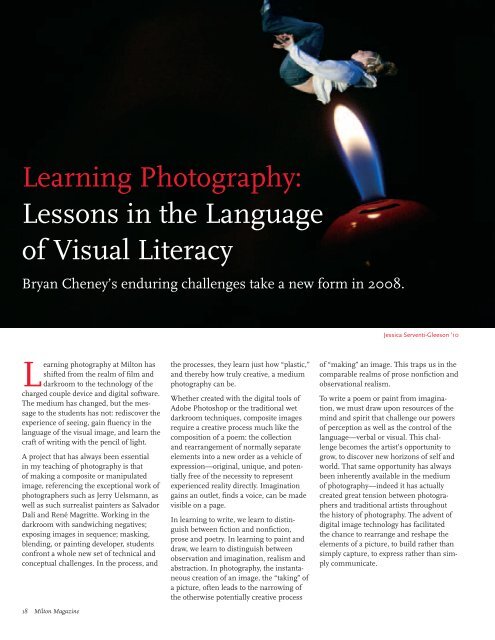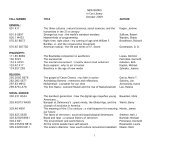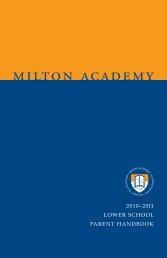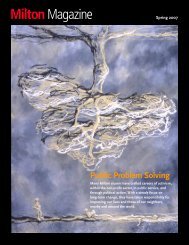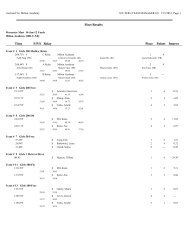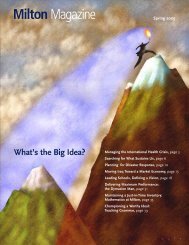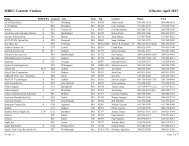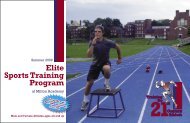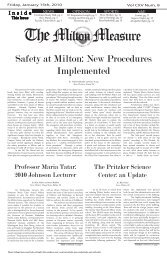Milton Magazine - Milton Academy
Milton Magazine - Milton Academy
Milton Magazine - Milton Academy
- No tags were found...
You also want an ePaper? Increase the reach of your titles
YUMPU automatically turns print PDFs into web optimized ePapers that Google loves.
Learning Photography:Lessons in the Languageof Visual LiteracyBryan Cheney’s enduring challenges take a new form in 2008.Jessica Serventi-Gleeson ’10Learning photography at <strong>Milton</strong> hasshifted from the realm of film anddarkroom to the technology of thecharged couple device and digital software.The medium has changed, but the messageto the students has not: rediscover theexperience of seeing, gain fluency in thelanguage of the visual image, and learn thecraft of writing with the pencil of light.A project that has always been essentialin my teaching of photography is thatof making a composite or manipulatedimage, referencing the exceptional work ofphotographers such as Jerry Uelsmann, aswell as such surrealist painters as SalvadorDalí and René Magritte. Working in thedarkroom with sandwiching negatives;exposing images in sequence; masking,blending, or painting developer, studentsconfront a whole new set of technical andconceptual challenges. In the process, and18 <strong>Milton</strong> <strong>Magazine</strong>the processes, they learn just how “plastic,”and thereby how truly creative, a mediumphotography can be.Whether created with the digital tools ofAdobe Photoshop or the traditional wetdarkroom techniques, composite imagesrequire a creative process much like thecomposition of a poem: the collectionand rearrangement of normally separateelements into a new order as a vehicle ofexpression—original, unique, and potentiallyfree of the necessity to representexperienced reality directly. Imaginationgains an outlet, finds a voice, can be madevisible on a page.In learning to write, we learn to distinguishbetween fiction and nonfiction,prose and poetry. In learning to paint anddraw, we learn to distinguish betweenobservation and imagination, realism andabstraction. In photography, the instantaneouscreation of an image, the “taking” ofa picture, often leads to the narrowing ofthe otherwise potentially creative processof “making” an image. This traps us in thecomparable realms of prose nonfiction andobservational realism.To write a poem or paint from imagination,we must draw upon resources of themind and spirit that challenge our powersof perception as well as the control of thelanguage—verbal or visual. This challengebecomes the artist’s opportunity togrow, to discover new horizons of self andworld. That same opportunity has alwaysbeen inherently available in the mediumof photography—indeed it has actuallycreated great tension between photographersand traditional artists throughoutthe history of photography. The advent ofdigital image technology has facilitatedthe chance to rearrange and reshape theelements of a picture, to build rather thansimply capture, to express rather than simplycommunicate.


